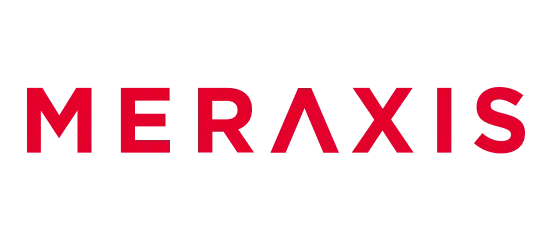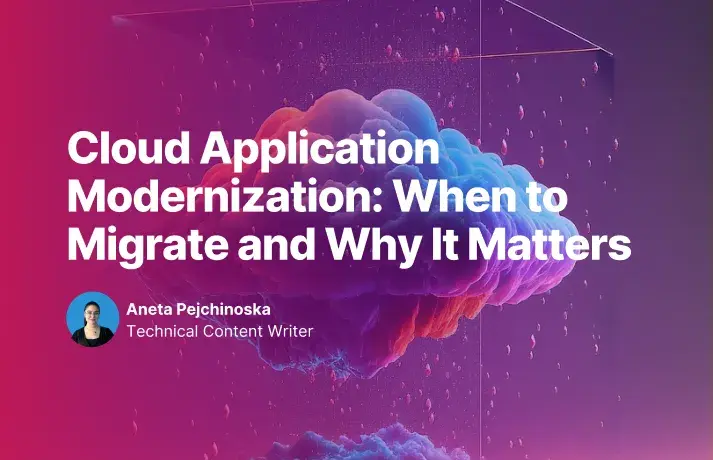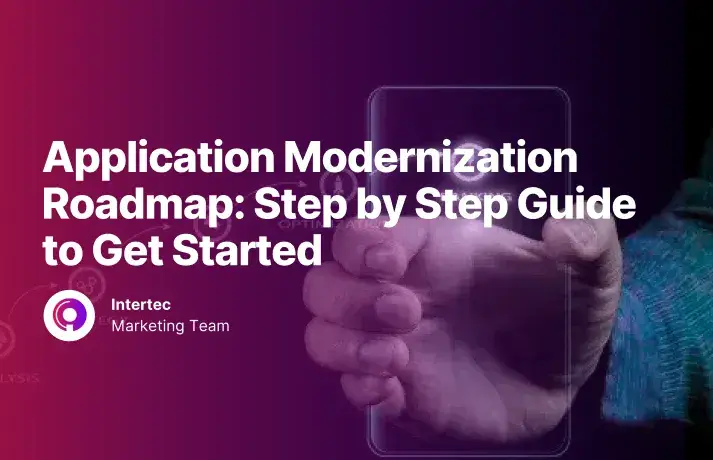Netflix: Rebuilding a Streaming Empire from Legacy DVDs
Legacy Challenge
Before Netflix became a streaming icon, it was a DVD-by-mail business. Back in the early 2000s, its infrastructure was designed for logistics - shipping, inventory tracking, and postal delivery. This setup couldn’t handle the unpredictable demand of streaming millions of videos simultaneously.
The company faced mounting legacy system limitations: scalability bottlenecks, sluggish content delivery, and an inability to adapt to global audiences in real time. As Netflix began expanding internationally, these legacy barriers threatened its growth.
Modernization Strategy
Instead of tearing everything down, Netflix ran modernization efforts in parallel. They began building a modern system beside the old one, ensuring service continuity while re-architecting.
The team transitioned to microservices architecture, moved their workloads to AWS Cloud, and developed Chaos Engineering to test system resilience by intentionally introducing failure scenarios. This approach allowed engineers to detect weaknesses before real users were affected.
By combining cloud scalability with distributed services, Netflix redefined what a digital entertainment platform could be.
Wondering about re-architecting? Check out the 7R’s framework article we published previously.
Business Impact
The results were transformative. Netflix achieved near-perfect uptime, reduced downtime risks, and could deploy new features daily. Its streaming services scaled seamlessly to 190+ countries without major outages.
The lesson? Don’t modernize within legacy systems - innovate beside them. Building new capabilities in parallel ensures business continuity and accelerates the transition to modern technologies.
Amazon: Continuous Evolution of Its E-Commerce Core
Legacy Challenge
Amazon’s story isn’t one of sudden modernization - it’s one of continuous evolution. From the early 2000s, Amazon’s monolithic e-commerce platform struggled to scale with growing global demand. Code changes in one part of the system often broke others. Deployment cycles stretched to weeks.
These bottlenecks made it difficult to maintain agility and innovation at scale. For a company driven by customer obsession, slow feature delivery was unacceptable.
Modernization Strategy
Amazon’s answer was to modularize its monolithic architecture into thousands of independent microservices. Each service had its own APIs and data models, enabling teams to develop, test, and deploy independently.
This transformation was supported by internal DevOps tooling, continuous integration pipelines, and a strong culture of ownership (“you build it, you run it”). Over time, Amazon integrated AI-driven personalization engines, predictive analytics, and serverless components to enhance efficiency.
The company didn’t treat modernization as a one-off project - it embedded it into its DNA. Every system was built to evolve continuously.
Business Impact
Today, Amazon’s platform handles billions of transactions with minimal latency. Teams can roll out features multiple times a day, scaling automatically based on demand spikes like Prime Day.
This continuous modernization model powers faster innovation, better customer experiences, and consistent uptime.
The takeaway? Modernization is never “done.” Treat it as an ongoing capability that evolves alongside your customers and technology.
Banking Sector: Modernizing with Security and Compliance at the Core
Legacy Challenge
Unlike tech giants, banks face unique constraints. Many still run on COBOL systems built in the 1970s or 1980s - rigid, siloed, and expensive to maintain. Integrating these systems with new digital channels like mobile apps or open banking APIs is incredibly difficult.
At the same time, regulatory compliance, cybersecurity, and data privacy requirements leave little room for error. Any modernization misstep could result in financial penalties or customer trust issues.
Not to mention that day-to-day operations block innovation ability, as 57% of firms state in a recent study.
Modernization Strategy
Banks are now turning to gradual modernization strategies. Instead of replacing everything at once, they use API wrappers to expose legacy logic while gradually refactoring the core systems.
They are embracing cloud-native infrastructure, often through hybrid models, to maintain compliance while gaining scalability. Technologies like containerization (Kubernetes), DevSecOps, and AI-based fraud detection are redefining how financial institutions operate.
Moreover, modernization initiatives prioritize security and compliance by design. Encryption, role-based access, and real-time monitoring are baked into new architectures.
Business Impact
The payoff has been significant. Banks that embraced cloud-native modernization, like Capital One and BBVA, report improved agility and faster go-to-market for new services. Customers now enjoy intuitive digital experiences - instant payments, personalized insights, and mobile banking powered by data analytics.
The broader lesson? Successful legacy app modernization in finance depends on balancing innovation with regulatory compliance. Trust remains the cornerstone of modernization success.
Common Themes Across Case Studies
When we analyze these modernization case studies, a few key patterns emerge - regardless of industry or scale.
1. Build New Beside Old
Both Netflix and major banks prove that the safest route isn’t tearing everything down. Running parallel modernization projects minimizes disruption while testing modern systems in real-world conditions.
2. Microservices and Cloud Lead the Way
Cloud computing and microservices dominate every successful application modernization case study. In fact, around 74% of organizations report they already use microservices architectures, showing how mainstream the shift has become. They enable flexibility, modular scaling, and continuous deployment - foundations for digital resilience.
3. DevOps and AI Integration Fuel Speed
Modernization is as much about culture as it is about code. DevOps practices, supported by AI for monitoring and automation, ensure faster releases and smarter infrastructure management. The same RedHat study cited above states that 78% of organizations either use or plan to use AI as part of their modernization journey.
4. User Experience Defines Success
Whether you’re streaming movies or transferring funds, modernization must enhance user experience. Faster load times, seamless interactions, and personalization are now the true metrics of success.
5. Continuous Evolution Over One-Time Upgrades
Amazon taught us that modernization isn’t a project - it’s a mindset. Continuous improvement, guided by feedback and data, keeps companies competitive long after the initial upgrade.
Conclusion: From Legacy to Leadership
Modernization isn’t just about replacing code - it’s about redefining how businesses deliver value. These application modernization case studies show that success lies in a blend of technology, strategy, and culture.
Netflix’s chaos-driven innovation, Amazon’s never-ending evolution, and the banking sector’s compliance-first modernization all highlight one truth: there’s no single path to success. The goal isn’t perfection - it’s progress.
As digital transformation leaders, we can benchmark our strategies against these proven modernization paths, adapting lessons to our unique contexts.
In the end, modernization isn’t just a tech upgrade - it’s a leadership decision that shapes your company’s future.
Ready to Modernize? Fill out the form to connect directly with our experts.







